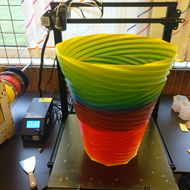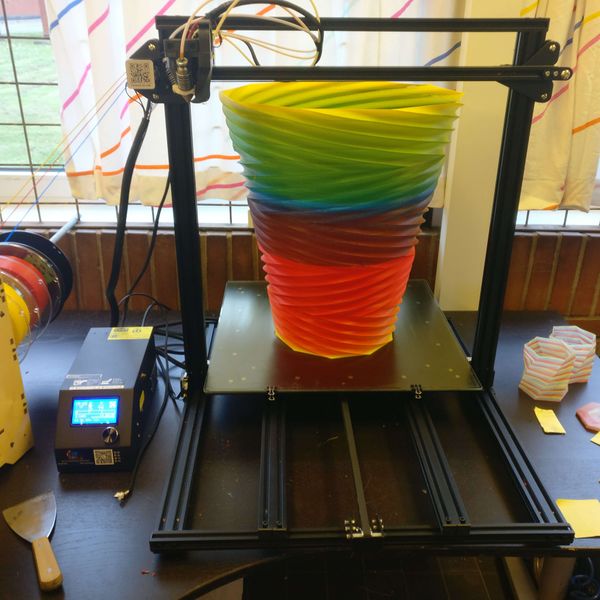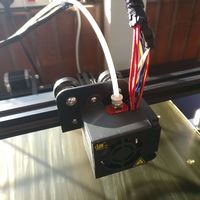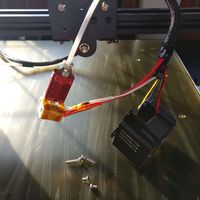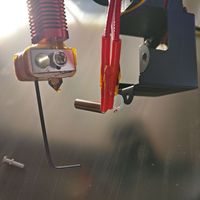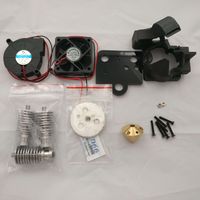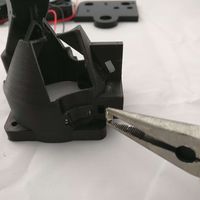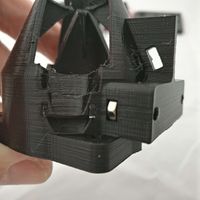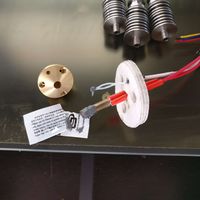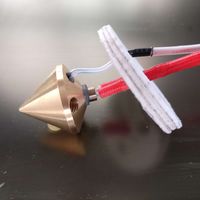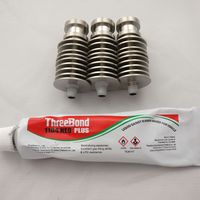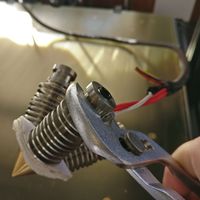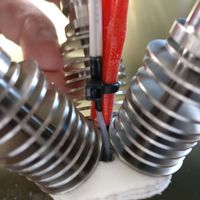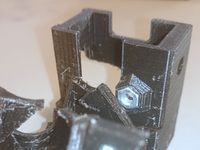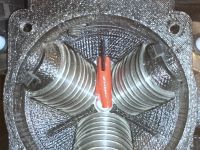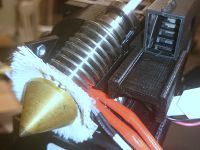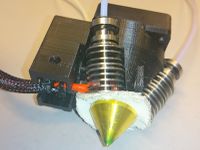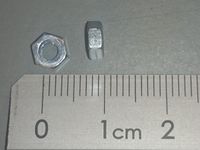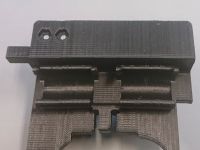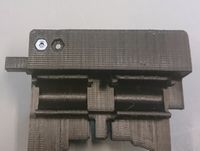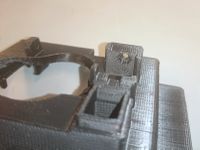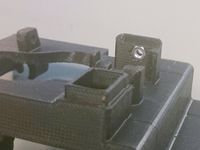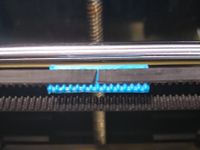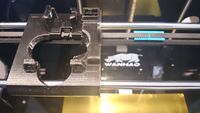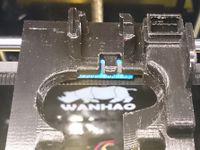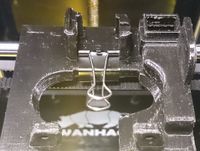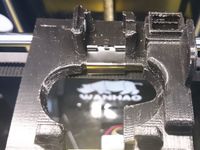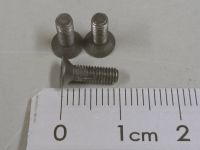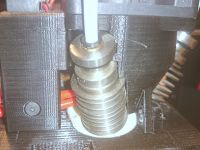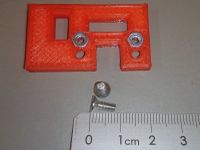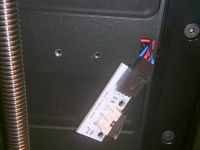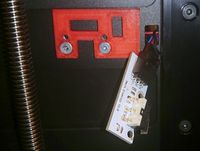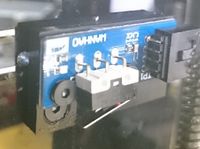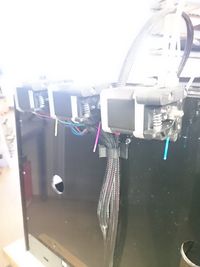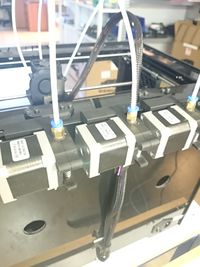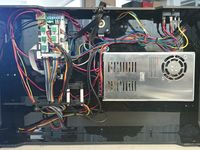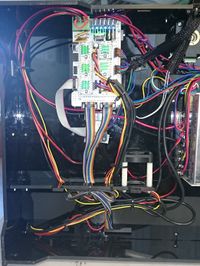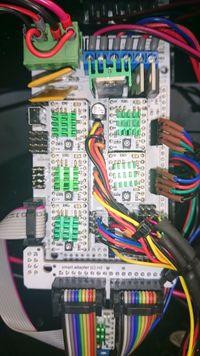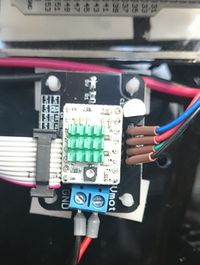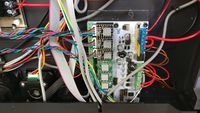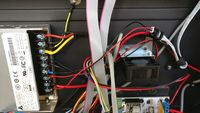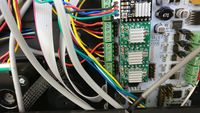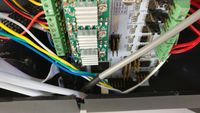Creality CR-10 Diamond
Release status: Development
| Description | Creality CR-10 Diamond
|
| License | |
| Author | |
| Contributors | |
| Based-on | |
| Categories | RepRap Color 3D printing
|
| CAD Models | |
| External Link |
Diamond Hotend upgrade guide for the Creality CR-10 family
This is the official build guide intended for those who wish to modify a Creality CR-10 for the Diamond Hotend.
The guide cover the family of Creality CR-10 (CR-10, CR-10S, CR-10 S4, CR-10 S5)
A little warning: this procedure will most likely void warranty on your device, so before proceeding please read this guide thoroughly and be sure you know and understand what you are about to do.
Contents
Part list
These are the parts needed for upgrading with the Diamond Hotend. For printed parts see the Thingiverse link at the bottom of this page.
Electronics
- 1 x Stepper Expander X2
- 2 x Stepstick
- 3 x Stepper Motor
- 2 x Stepper Motor Cable 1200mm
- 1 x Fan 12V
- 1 x Blower 12V
3D printed mount kit
Diamond Hotend
- 1 x Diamond Nozzle 1.7 mm version
- 3 x E3D Lite6 heatsink with bowden fitting
- 1 x Diamond Hotend Insulators
- 1 x Creality Diamond Hotend Upgrade Special Parts
Extruders
- 2 x Creality Extruder
- 2 x Creality Extruder Drive Gear
- 3 x Bowden tube
Assembling
Hardware
- Dismount the original extruder.
- Unscrew the fan mount and cut the wires for the fans. Cut them close to the fans as we need the original fan wires to solder onto the new fans.
- Unscrew the original hotend and release the heater cartridge and thermistor for the hotends heat block. We need the heater cartridge and thermistor to insert into the Diamond Nozzle. If the heater cartridge and thermistor is not fitted with connectors, we recommend to add them for ease of installation, but it's not necessary.
- Mounting the Diamond Hotend.
- Insert two M3 nuts into respective slots of the 3D printed mount. One on each side.
- Feed the heater cartridge through the insulators center hole (you can use all 3pcs insulators for extra insulation, however 1pcs can do it), feed the thermistor through the insulators small hole.
- Add heat paste to the tip of the thermistor and the sides of the heater cartridge. Do not use too much heat paste, as it can be hard to insert the heater cartridge fully into the nozzle.
- Insert the heater cartridge fully into the center hole of the nozzle and insert the thermistor all the way into the bottom of the small hole of the nozzle. It's important to have the heater cartridge fully inserted or else the heatsinks can't be mounted correctly
- Before screwing in the heatsinks, we recommend to use some liquid gaskets or PTFE tape on the threads, to prevent leaking.
- Carefully put the thread through the insulator and screw it into the nozzle. Make sure each heat sink will not touch the side of the heater cartridge but they will overlap it and prevent it to fall out. If the heatsink touches the side of the heater cartridge, it's because the heater cartridge is not inserted fully into the hole or it's longer than 20mm. Tighten each heatsink with a plier. Do not overtighten as it can break the neck of the thread
- Fix the wires from the thermistor with the wires from the heater cartridge with a zip tie. Make sure the thermistor is fully inserted into the bottom of the nozzle.
- Feed the wires into the 3D printed mount and carefully slide in the nozzle with heatsinks.
- The heatsinks will click into the mount with a firm push. It takes quite some force to click the heatsinks into place and i have two techniques i use. You could use the palm of your hand to press on the tip of the nozzle but it is painful. Another technique is to
- Your cooling shield should now look something like this.
- Grab the x-carriage part and mount the two M3 nuts into the slots as shown on the pictures below. If they are too loose you may glue them into place and if they are too tight to fit you may heat them into place using a soldering iron like described on the Diamond Hotend page step two.
- Align each end of the belt onto the S2M beltclamp and glue these parts together using cyanoacrylate glue. Then align the linear bearings with the x-carriage and press it onto the bearings. After aligning the S2M beltclamp with the x-carriage (see picture) put a bulldog clip around the parts so that it holds the belt in place. Lastly pinch to remove each of the clip handles.
- Mount the top part onto the x-carriage using three M3x10 countersunk bolts. Please observe that the thermal insulations does not get stuck anywhere between the two printed parts.
- Unscrew the Z-endstop switch and reinstall it onto the adapter using two M3 nuts and two M3x8 countersunk bolts. Make sure that the endstop switch is touched by the bed when it is at top position (in case it doesn't you can use the spacers from the original endstop mounting). *Replicator or Creator Pro. No need for endstop spacer, just slide the endstop 2-3mm down.
- Assemble the bowden extruders (following the steps on Diamond Hotend).
- Mount the extruders on the top rear edge of the printer.
- See "Attaching the bowden tubes" as well as Bowden tube hints section on the Diamond Hotend page.
Electronics RAMPS
These instructions will guide you briefly around removing the Mighty Board and install a RAMPS plus a Stepper Expander X1
Beware: Make sure that your RAMPS board and the Arduino MEGA can take the 24 volt from the original power supply of the Duplicator without releasing the magical blue smoke.
- First turn the printer on its side and remove the lid of the electronics compartment.
- Unplug all plugs from the Mighty Board and note where each of them goes
- Unmount the Mighty Board by unscrewing it from the frame of the printer.
- In order to align the USB socket of the RAMPS with the corresponding hole in the frame (6-8 mm) you may need to first glue a couple sheets of eg. acrylic in place. You may be using adhesive pads for this.
- Mount the RAMPS on top of the acrylic using adhesive PCB spacers.
- Mount the Stepper Expander X1 (or pb ExtrudrBoard) again using the adhesive PCB spacers.
- Connect The Stepper Expander (or pb ExtrudrBoard) to the RAMPS AUX-2 using the 2x5P IDC cable.
- Move the power wires from the Mighty Board plug and connect them to the RAMPS
- Add the power wiring from terminals on the Stepper Expander (or pb ExtrudrBoard).
- Cut the motor plugs and solder on 4-pin female headers, remember to insert each wire through a piece of heat shrink prior to soldering, and carefully crimp it using a lighter flame.
- While observing orientation insert five stepsticks in the vacant positions of the RAMPS board and the remaining stepstick into the Stepper Expander. (The trimpot on a standard A4988 driver should be closest to the power terminals on the Stepper Expander).
- Adjust the extruder stepsticks (or the motor drivers on ExtrudrBoard) to output 1.2 Ampere. See the link section for a separate guide on the subject of current limiting.
- Cut the 120 cm braided sleeve into 40 and 80 cm.
- Feed the extruder motor cables through the 40 cm braided sleeve.
- Also feed the Thermistor Heater and Fan wires through the 80 cm braided sleeve (80 cm).
- Secure the braided sleeves at the rear of the printer
- Tie all wirings in the electronics compartment so that no wires are blocking the airflow from the cooling fans to the stepper drivers.
- Finally attach the optional display to the front.
Electronics RUMBA
These instructions will guide you briefly around removing the original electronics and install the RUMBA electronic
- First turn the printer on its side and remove the lid of the electronics compartment.
- Unplug all plugs from the original electronic board and note where each of them goes.
- Unmount the original electronic board from the frame of the printer.
- Mount the StepSticks into the RAMBO and beware of the correct orientation.
- In order to align the USB socket of the RAMBO with the corresponding hole in the frame (6-8 mm) you may need to first glue a couple sheets of eg. acrylic in place. You may be using adhesive pads for this.
- Attach the +24V power wires to the RAMBO in both the POWER IN and HEATBED IN screw terminal and add the Hotend heatsink fan to the +24V.
- Cut the motor plugs from the stepper motor wires and screw each into the screw terminals of X, Y, Z, E0, E1 and E2. Make sure you will have a motor coil (low resistance) in pin 1+2 and pin 3+4.
- Attach the Hotend thermistor to T0
- Attach the Hotend heater to HE0
- Attach the Hotend blower fan to FAN0
- Adjust the StepSticks to output 1.2 Ampere for all Extruder motors. See the link section for a separate guide on the subject of current limiting.
- Cut the 120 cm braided sleeve into 40 and 80 cm.
- Feed the extruder motor cables through the 40 cm braided sleeve.
- Also feed the Thermistor Heater and Fan wires through the 80 cm braided sleeve (80 cm).
- Secure the braided sleeves at the rear of the printer
- Tie all wirings in the electronics compartment so that no wires are blocking the airflow from the cooling fans to the stepper drivers.
- Optional you can add +24V and GND (R,G,B) to the LED strip.
- Finally attach the optional display to the front.
Sources
Part files
- "Diamond mount for Replicator/Duplicator" on Thingiverse - http://www.thingiverse.com/thing:899168
- Z-endstop_holder.stl
- MK9_wide_right.stl
- S2M_beltclamp.stl
- Wanhao Diamond cooler shield ver3.stl
- Wanhao X-carriage ver3.stl
- Flashforge Creator Pro LCD panel front.stl
- Diamond Hotend Insulator - http://www.thingiverse.com/thing:720520/#files
- diamond_thermal_isolation.dxf
Links
- This guide - http://reprap.org/wiki/Duplicator_Diamond
- Diamond Hotend general guide - http://reprap.org/wiki/Diamond_Hotend
- Stepper Expander - http://reprap.org/wiki/Stepper_Expander
- Adding more extruders - http://reprap.org/wiki/Adding_more_extruders
- Current limiting your stepper drivers, see section "current limiting" - http://reprap.me/pololu.html
